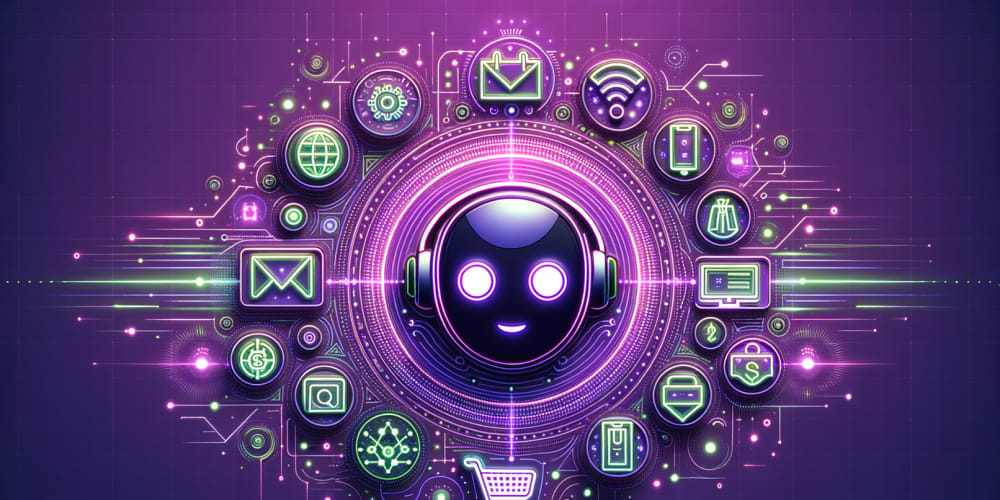As more businesses use AI technology, ensuring the security of AI workloads is essential. Making decisions based on data is increasingly vital, so there are serious concerns about AI systems being compromised. Microsoft leads the way in providing trustworthy AI solutions through its Azure platform. Safeguarding AI workloads is a top priority for Microsoft, and the company has implemented several best practices for Azure AI Security to ensure the security, reliability, and trustworthiness of its AI services.
This article discusses how Microsoft protects Azure AI workloads. It covers advanced technology, strict AI security requirements, and security policies. The article also explores the Azure AI Security best practices that help businesses protect their AI infrastructure.
The Importance of AI Security
Artificial intelligence involves complex procedures for learning, processing, and making decisions based on large amounts of data. This data often includes sensitive and private information, like bank records, personal identifiers, or company data. When interfered with or manipulated, AI systems can lead to inaccurate predictions, privacy breaches, or inefficient resource use.
Microsoft understands the need for unique security strategies to protect AI workloads. The company has added multiple security layers to its Azure platform designed for AI workloads. This helps organizations reduce risk while fully using AI's capabilities.
Azure AI Security Best Practices
Let's examine the fundamental Azure AI security best practices that Microsoft adheres to and recommends its users follow:
1. Adopt a Zero Trust Security Model
Zero Trust security is crucial for Azure AI, assuming that nothing inside or outside the network can be trusted by default. Microsoft applies this approach to all Azure AI services. It ensures that any request to use AI resources is checked and approved. This lowers the risk of insider threats and reduces potential entry points for criminals.
2. Secure AI Models with Confidential Computing
AI models often contain confidential intellectual property, making them vulnerable to manipulation or theft. Using Azure Confidential Computing is a crucial best practice for ensuring the security of Azure AI. This feature guarantees that AI models and data are encrypted during processing, not just in transit or at rest. Even if the underlying infrastructure is breached, malicious actors will have difficulty accessing the AI model or data due to the secure enclaves of Azure Confidential Computing. These enclaves separate critical operations from other processes, providing an additional layer of security that maintains the confidentiality of AI workloads throughout their lifecycle.
3. Ensure Data Privacy and Compliance
AI security relies on data privacy, especially in sensitive sectors like healthcare, finance, and government. Microsoft's Azure platform meets the world's most strict data privacy regulations. One of the best practices for Azure AI security is ensuring that any AI task complies with these rules.
- To safeguard the privacy of data in AI workloads, companies can:
- Encrypt critical information in transit and at rest using Azure's built-in encryption tools.
- Set up access controls so authorized personnel can only access data.
- Make sure to use Azure Policy to follow specific industry rules and regulations.
4. Endpoint Security and Network Protection
Protecting AI systems involves securing AI workloads' entry and exit points, like APIs and data interfaces. Using Azure's network security services, such as Azure Firewall and Azure DDoS Protection, is a crucial best practice for Azure AI Security. Azure provides secure communication between AI components using virtual private networks (VPNs), secure tunneling, and virtual network (VNet) isolation. This ensures that AI workloads are conducted in safe and separate settings. This multi-layered defensive technique prevents unauthorized external access to AI systems.
5. Secure AI Development Lifecycle
Microsoft prioritizes a Secure Development Lifecycle (SDL) for creating and implementing AI workloads. This process ensures that security is incorporated into AI development from start to finish. This approach consists of three primary components: threat modeling, vulnerability scanning, and code analysis. By identifying potential security concerns early in the development cycle, organizations can reduce security risks before they affect production settings. Security checks are included in AI development at every stage, including testing and validation, to ensure that AI systems can withstand known and new threats. Sustaining this proactive security approach requires regular audits and evaluations.
6. AI-Specific Threat Detection
Workloads involving artificial intelligence are subject to particular security risks, such as adversarial attacks, in which a hacker purposefully falsifies input data to trick an AI model. Microsoft has created specific threat detection techniques to recognize these assaults as part of Azure AI Security best practices. AI-specific threat detection capabilities are offered by tools like Azure Sentinel and Azure Machine Learning Threat Detection, which enable enterprises to spot odd trends or abnormalities in AI behavior. Organizations can stop possible misuse or manipulation of their AI systems by identifying and addressing threats particular to AI early on.
7. Monitoring, Auditing, and Compliance
Azure AI Security best practices include ongoing monitoring of AI workloads using built-in tools like Azure Security Center and Azure Monitor. These technologies provide insights into how the system is performing and can identify any security weaknesses. They also flag suspicious activity automatically to help businesses maintain the operational integrity of their AI workloads. Azure also offers comprehensive auditing tools to monitor system modifications, user activity, and access records. Azure's compliance solutions also ensure businesses meet necessary privacy and data security requirements.
Conclusion
Protecting AI workloads is essential for using AI effectively while keeping systems secure and safeguarding sensitive data. Organizations can defend their AI infrastructure from increasing cyber threats by following Azure AI Security best practices, such as secure data processing, role-based access control, endpoint protection, and AI-specific threat detection. Microsoft's extensive security tools and managed Azure services provide a strong framework to ensure the safety of AI models throughout their lifecycle. By implementing these measures, organizations can improve compliance, maintain trust, and ensure the long-term success of their AI-driven projects.


















